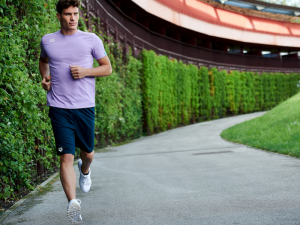Running and Swimming: calorie-burning work-outs for the summer
Sport is essential for getting in shape for the summer. So how can you burn fat and calories by swimming and running? Here’s a training plan for the summer.
One of the reasons people get involved in non-competitive sport is certainly to keep in shape and lose weight. Running and swimming are probably the two most popular sports for achieving these goals.
Probably due to the fact they are so easy to do, running and swimming are two of the most popular sports with people trying to get in shape for the summer: all you need for running is a pair of running shoes and some open space and for swimming all you need is a swimsuit and “a bit of water”.
In certain respects, they are similar sports, because training is based around the same basic principles: sprints, aerobic reps, interval training etc. Of course, runners mainly use their lower body while swimmers make more use of their upper body, but from a cardiovascular viewpoint they are similar and both excellent sports for losing weight.
Nevertheless, it is worth pointing out that you consume more calories running than swimming over the same length of time. This is due to the almost total lack of gravity in water. But do not worry, swimming is still an excellent way to burn a few calories.
Let’s take a look at different types of training you can do to lose weight by either running or swimming.
It is advisable to warm up for at least 10-15 minutes before beginning these workouts.

Long training session, times and distances
This kind of training involves running/swimming over a long distance (or time) keeping your heart rate at around 120-140 bpm. This is the kind of training most average amateur swimmers/runners do, possibly due to how simple it is. Nevertheless, it is worth noting that even though long distances mean low intensity, the body responds differently in the water than it does on dry land. Your heart rate goes up even when you run even at a slow pace.
On the other hand, due to the aforementioned issue of gravity, your intensity stays low when you swim slowly. This means you need to swim at a slightly higher intensity than you run during long-distance sessions. A long swim should last at least 45 min, obviously the distance you swim is subjective.
Repetitions
Your intensity and heart rate are very similar to when performing “distance” sessions. The basic idea is to break down the overall distance into several shorter sections. The minimum distance for running reps is 800 m, compared to 200 m in the water. For example, instead of swimming a long distance of 2 km, do 4×500 m or run 8×1000 m instead of an 8 km run.
You incorporate plenty of variation by introducing sudden increases in pace and lengthening or shortening the distances. Recovering for 20-30 sec. and breaking down your “long-distance” session will allow you to work at a slightly higher intensity.

Interval training
This kind of training involves alternating higher and lower intensities. For example: run 30 sec. hard + 1 easy for a total of 5 min, repeated 3 times. In the water, swim 2×600 m alternating 50 m easy with 25 m hard. Intervals can be varied in all kinds of different ways, but the basic principle is always to alternate high and low intensity efforts.
You can also combine running and swimming, for example, beginning with some running repetitions followed by a long-distance or interval session in the water.
Enjoy your training!
Written by:
arena coaches
Swim coaches, trainers and experts will give you all kinds of tips for performing at your best in both training and races.







